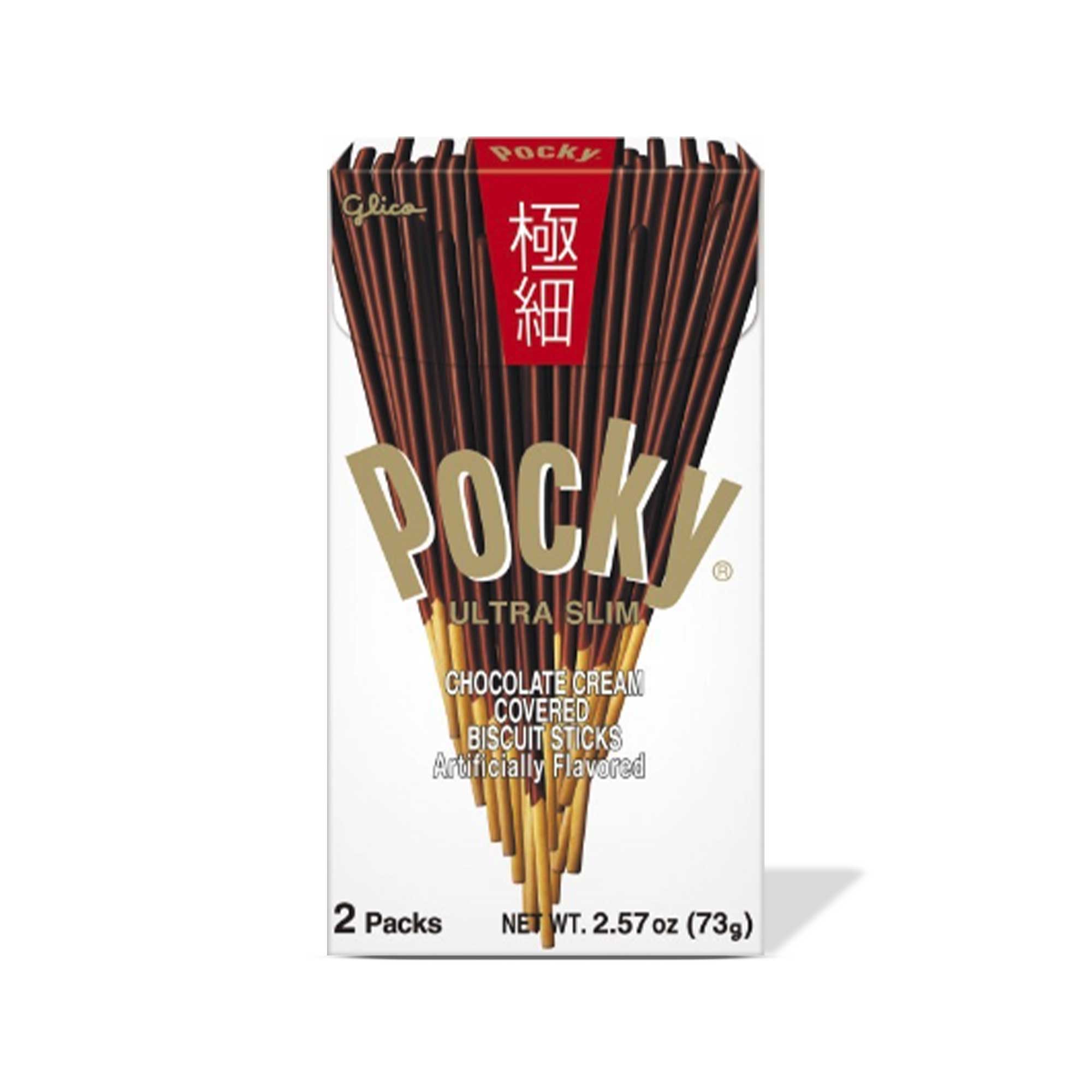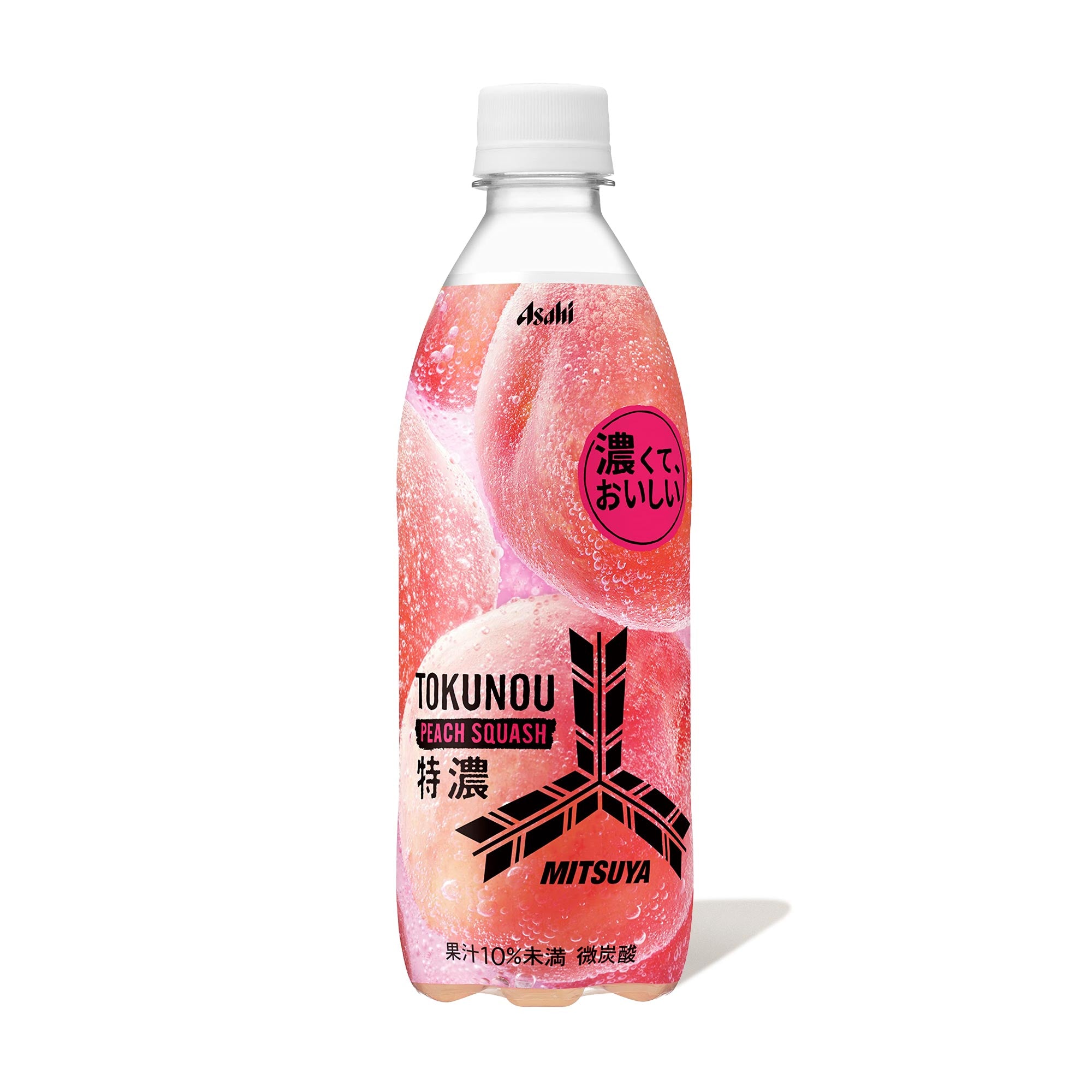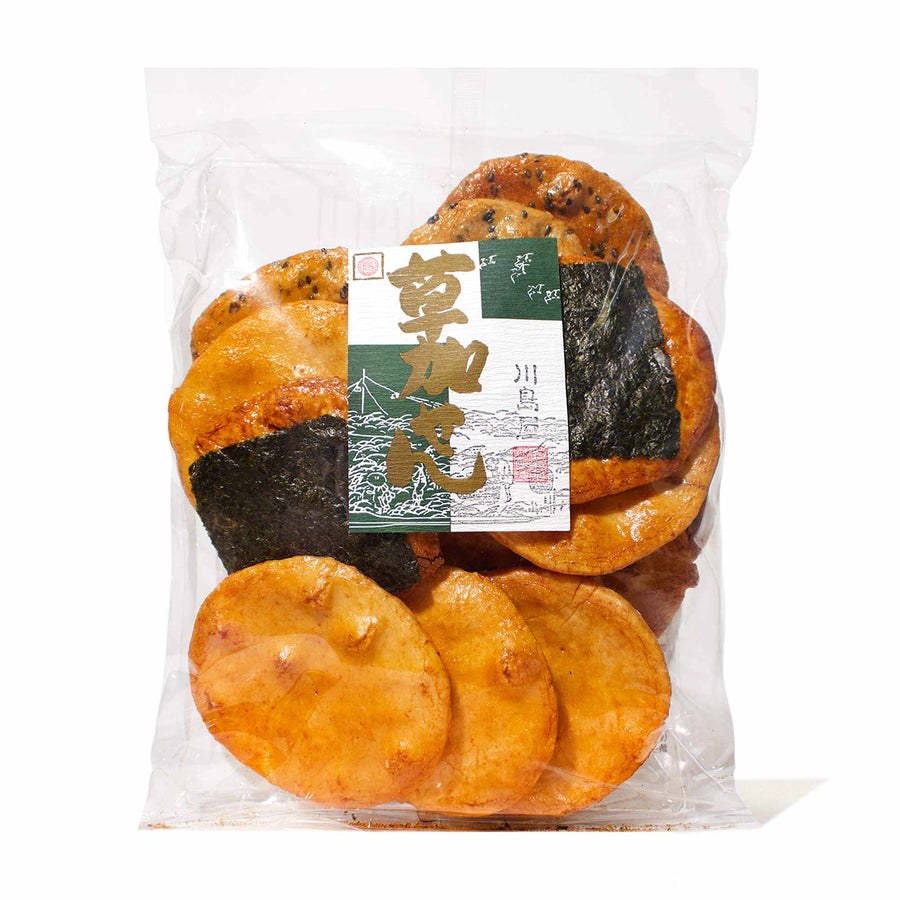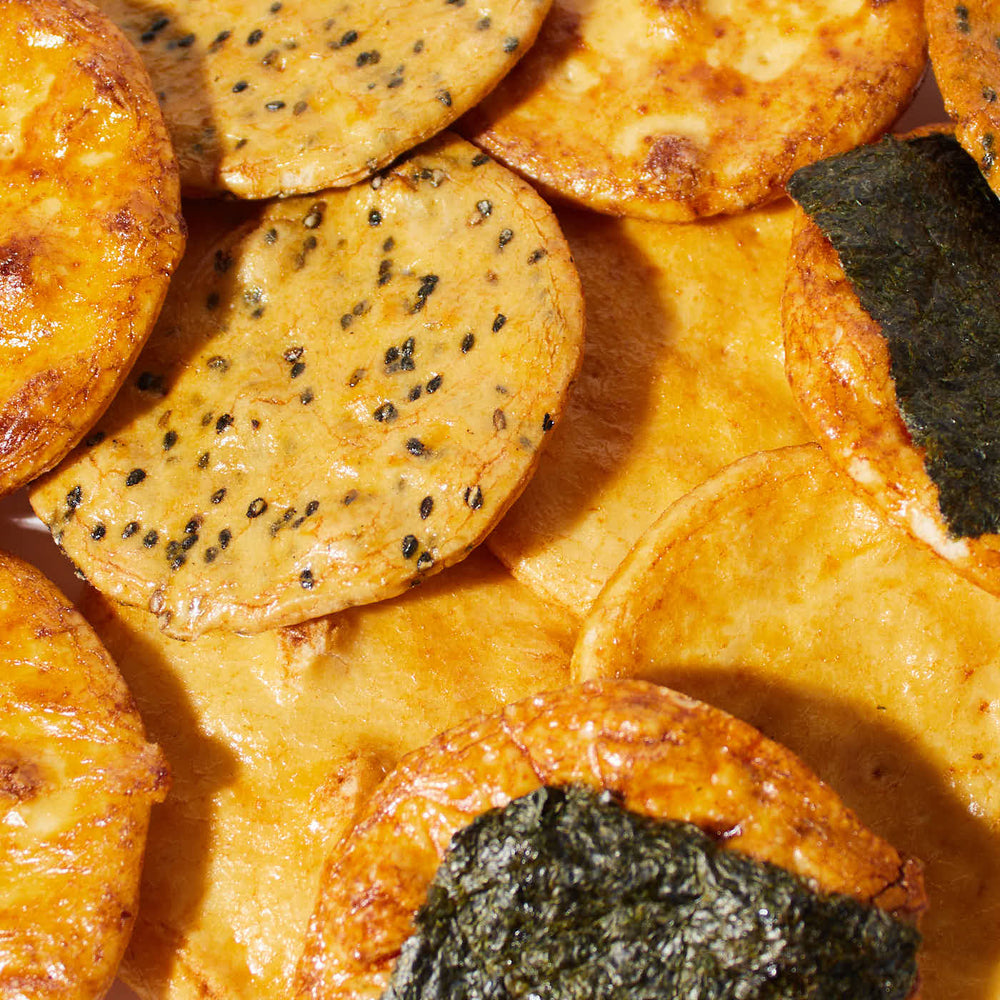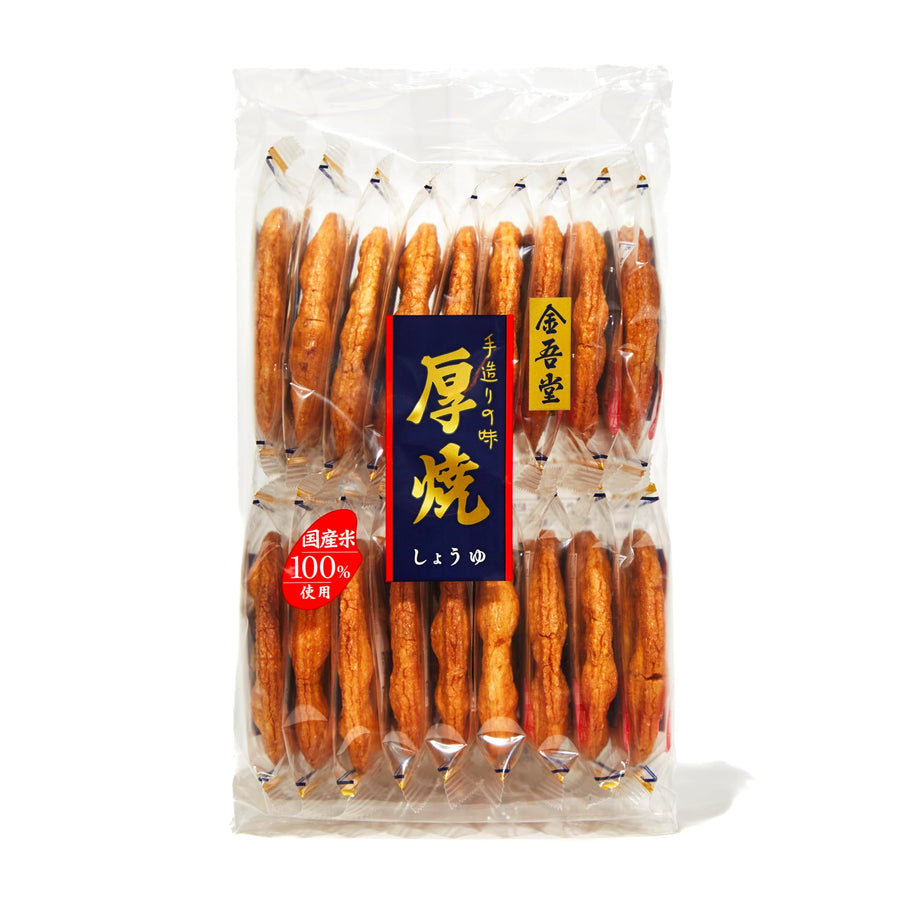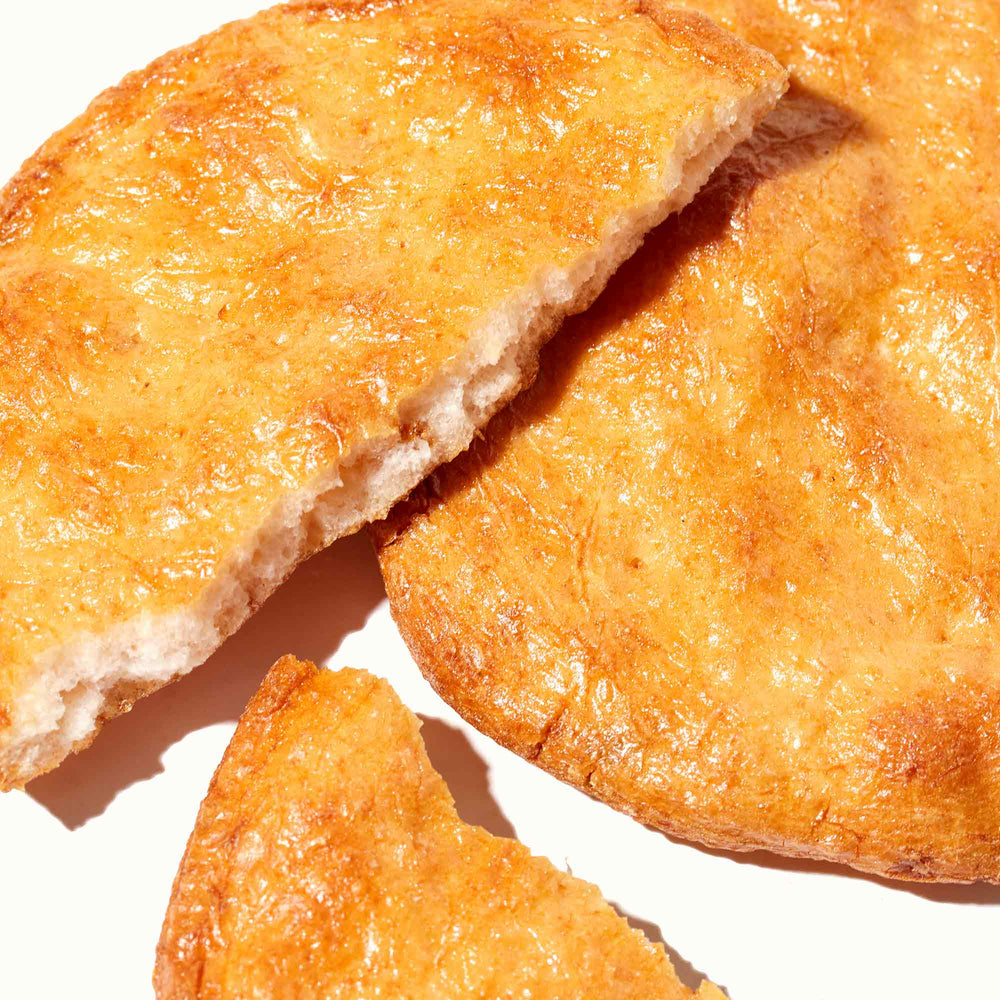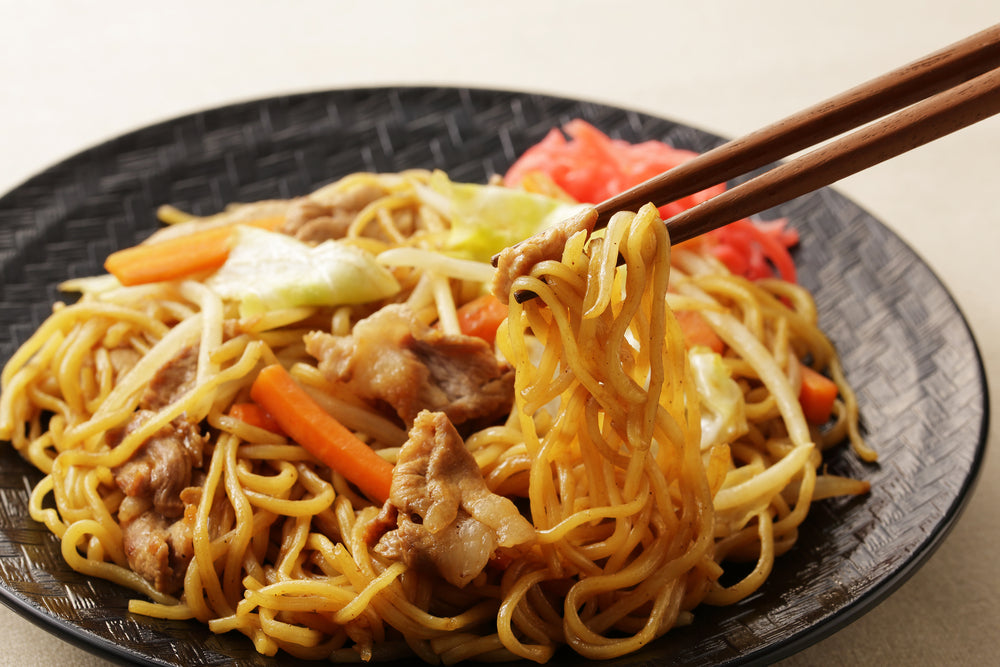Japanese Rice Crackers: A Crunchy Journey Through Tradition and Taste
Rice has always been a part of Japanese culture, not just as a meal but as the core ingredient for a variety of traditional snacks, dishes, and even drinks. Hence, it’s no surprise that rice is also used to make crackers. This isn’t just an experimental snack. Senbei has stood the test of time and has had a massive impact on ancient and modern Japanese culture.
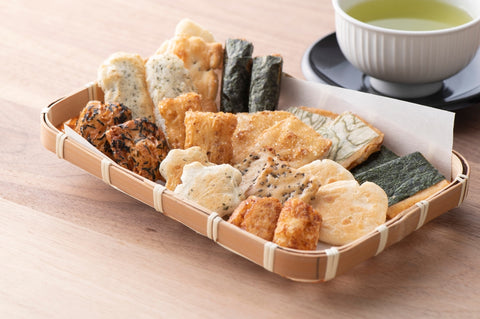
Senbei is a type of Japanese cracker made from glutinous or non-glutinous rice. Senbei rice crackers are typically eaten with green tea and can taste sweet or savory, depending on the recipe. People eat them as a quick treat, serve them to household guests, or share them during celebrations. Modern senbei may include any of several different kinds of flavoring. Some of the common flavors added to senbei are soybean, soy sauce, nori, mirin, and sugar.
From their preparation to their unique benefits, we’ll cover everything you need to know about these Japanese rice crackers in this post. For now, let’s take a quick look back at senbei’s invention and rise to prominence.
The History of Senbei: From Ancient Times to Modern Snack

Senbei is a type of dry Japanese rice confectionary called beika. It has the richest history among all of the other rice crackers in the country. The original inspiration for senbei came from jianbing, a Chinese pancake made from rice. Travelers brought along these pancakes in 737, in the middle of the Tang dynasty (618–907), and people in Japan began to make their own versions as senbei rice crackers.
The original versions were made from wheat flour, vegetable oil, and potatoes. They were also fried and much thinner than they are today. The version of senbei we know and love first became popular in Soka, a small city in the Saitama Prefecture of Japan. During the Edo period (1603–1868), there was a teashop in the area serving soy sauce-infused senbei rice crackers to the locals. The salty dish began to spread across the country.
New ideas were created, and modern rice crackers now include a diverse range of flavors and textures, such as wasabi, chocolate, and nori. Today, senbei is one of the most popular Japanese snacks. If you’d like to know what modern senbei tastes like, we recommend Kawashimaya Senbei Rice Crackers. They’re simple yet delicious treats that exhibit how well umami flavors blend with modern senbei.
The Art of Making Senbei

The senbei-making process starts with the steaming of glutinous rice for 10 to 20 minutes or until it is cooked. The steamed rice is then pounded to make a dough, which goes in the refrigerator or gets sundried for several days before being cut into shapes.
Next comes an elaborate procedure of baking, grilling, or toasting to achieve a crispy texture and golden color. The cooking process also involves the addition of various seasonings and condiments. That is where the craftsmanship of the cook comes into play. You need to know what flavors to combine and how they affect taste and texture. Traditional senbei-making methods involve cooking the dough over charcoal.
Modern methods don’t require pounding the dough. People put rice flour and cooked rice in a processor instead. It’s also common to find recipes that don’t require refrigeration yet produce a great flavor.
Understanding the Types of Japanese Rice Crackers
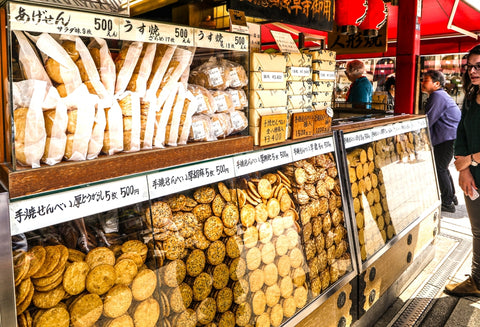
Please note that senbei are not the only Japanese rice crackers, although they are the most common. There are at least two others: arare and okaki. It’s generally acceptable, albeit incorrect, to categorize the other rice crackers as types of senbei.
However, there are over ten different types of senbei rice crackers. Let’s explore their most popular varieties and how they are made.
-
Shoyu senbei: It is made by coating the rice crackers with soy sauce during the baking, grilling, or toasting process. It’s the most popular type of senbei.
-
Nori senbei: It involves the addition of powdered nori seaweed to the dough before baking. The senbei is also wrapped in dried seaweed sheets.
-
Satou senbei: It is coated with powdered or melted sugar.
-
Kaki no tane senbei: It is a type of senbei mixed with various nuts, especially peanuts.
-
Togarashi senbei: It is coated in red chili peppers after toasting. The red pepper coating may be in the form of flakes or powder.
-
Ebi senbei: It is a mixture of senbei dough and dried shrimp, which is then deep-fried. Bokksu × Kuze Fuku Sakura Shrimp Rice Crackers are the tastiest ebi senbei you’ll ever find. They offer the perfect blend of sweet and savory.
-
Hone senbei: It involves the use of grilled fish bones, such as eel spines, as the main ingredient.
-
Kuro goma senbei: It is a crispy and crunchy treat made with black sesame seeds.
-
Ika senbei: It is made with squid baked on the surface of senbei crackers.
-
Kuromame senbei: It unlocks the earthy potential of senbei with the help of black soybean.
Flavor Exploration: Popular Senbei Varieties

Senbei types are categorized by their core ingredients. However, you can add all kinds of flavoring to them. Check out popular senbei flavors below.
Shrimp: Shrimps bring the unmistakable taste of seafood to senbei. They enhance both the flavor and nutrient profiles.
Seaweed: Nori is the most popular type of seaweed used to flavor senbei. It’s also a staple ingredient for making arare rice crackers and nori maki (sushi rolls). Seaweed brings that salty taste from the ocean to your plate of senbei.
Soy sauce: The sweetness of glutinous rice combines well with the umami that soy sauce brings to snacks. It gives the crackers savory tastes and enhances their aroma. Give Kingodo Atsuyaki Baked Rice Crackers: Soy Sauce a try and see for yourself.
Sugar: The addition of powdered or melted sugar to senbei helps to improve sweetness and texture.
Senbei vs. Other Japanese Rice Snacks
Earlier in this post, we mentioned how senbei is not the only Japanese rice cracker in existence. Now it’s time to unveil the traits that set senbei apart from the other types of beika: arare and okaki.
Size: A piece of senbei is bigger than that of arare and okaki. The smallest of the lot is arare, which comes in the form of bite-sized pieces.
Composition: While senbei can be made from non-glutinous rice and its flour, both okaki and arare only consist of glutinous rice. Also, senbei has a wider range of potential flavors and ingredients than the other two Japanese rice crackers.
Shape: Senbei crackers tend to have a circular shape, arare is more spherical, while okaki has no regular shape.
Pairing Senbei with Tea: A Timeless Tradition

Senbei is the perfect snack to pair with tea, and you’re about to find out why. We’ll suggest ideal Japanese teas to pair with different types of senbei and enhance the snacking experience.
Genmaicha and shoyu senbei: Genmaicha is a brown rice tea popular in Japan. The savory nature of shoyu (soy sauce) rice crackers perfectly complements their crisp, roasted scent and taste.
Matcha and nori senbei: Matcha green tea pairs well with a variety of senbei, especially those with seafood flavors. Nori rice crackers are one of our favorites.
Matcha and ebi senbei: Still on the topic of pairing seafood flavors with green tea, ebi senbei is another great option to try.
Innovative Senbei: Fusion Flavors and Modern Twists
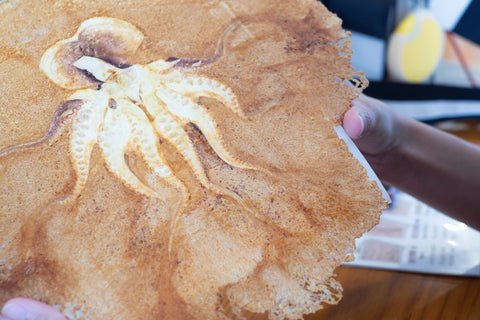
Contemporary producers are innovating with senbei, introducing new flavors and ingredients while respecting tradition. Here are a few innovative senbei ideas you can try.
Kare (Curry) senbei: Japanese curry is sweeter than other kinds, making it the perfect ingredient to add to your senbei. Kare or curry senbei, is made by adding some curry to the dough before toasting.
Mentaiko senbei: Mentaiko (fish roe) can be added using a similar method to curry senbei. Mentaiko adds a salty and spicy umami-rich flavor.
Tako senbei: Octopus is a delicacy in Japan, and you’ll find it in different kinds of snacks, including takoyaki. To make tako senbei, you need to press and flatten pieces of octopus on the crackers before baking.
Senbei ice cream sandwich: This is a modern and unconventional way to enjoy sensei. Pour some ice cream on a senbei cracker and then stack a second cracker on top of the ice cream, forming a sandwich.
Buttered senbei: Buttered rice crackers offer a creamier take on the traditional Japanese snack. We recommend Iwatsuka Butter Mochi Rice Crackers if your taste buds are craving a unique and delicious snack.
Where to Find Authentic Japanese Rice Crackers
If you’re in Japan, you can easily find authentic senbei at the supermarket or tea shop. Things get a little tricky when you’re abroad because living in countries like the United States means you have to be careful when getting Japanese rice crackers from online markets. Many of them use domestic manufacturers or suppliers, which robs you of an authentic experience. Bokksu Market remains one of the most reliable sources for traditional and innovative Japanese rice crackers. We offer both variety and quality. The Tekka Musashi Assorted Crunchy Rice Crackers are a perfect example of these values. The product contains four different flavors of high-quality senbei sourced directly from Japan.
Senbei's Enduring Popularity and Cultural Significance
Senbei continues to play a role in modern Japanese culture. You’ll find it being served to visitors, at festivals, and during tea ceremonies. Its crunchiness and umami flavors appeal to lovers of Japanese cuisine, and it’s hard to see that changing anytime soon. Senbei rice crackers definitely deserve the Bokksu Market stamp of approval.
Author Bio


